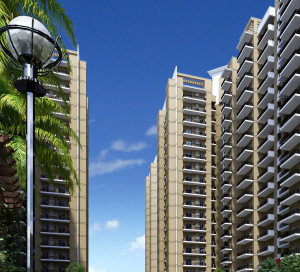Guest Column
Real Estate Outlook for 2015 by Anuj Puri, Chairman & Country Head, JLL




The year 2015 will definitely be a good year for the real estate sector on three counts:
• The threat of inflation has completely submerged, and borrowing rates are sure to go down from the current levels. This will encourage potential buyers planning to avail of home loans to finally take the plunge. Also, with property prices staying stable and good deals being offered by developers in order to clear their inventory, fence-sitting buyers befurther encouraged to press the ‘buy’ button.
• Economic activity is gradually picking up, and the central bank anticipates GDP growth to reach 6.5 per cent y/y in the next financial year (FY2015-16). Corporate India has already made it clear that there will be more hiring of talent to help tackle rising business activity. Put together, this means a rise in jobs and incomes, which in turn is very favourable for both residential and commercial real estate.
• The market has witnessed a re-orientation and developers are now largely focusing on affordable homes. This will go a long way, though definitely not all the way, in bridging the existing wide gap between demand and supply of affordable homes. In 2015, developers will become more earnest about right-sizing and right-pricing their offerings. Smaller, yet better-designed and more efficient homes will define the residential real estate market in 2015, and selective corrections in some of the over-priced cities will help bring about faster sales for stagnated supply of larger configurations. Townships will become more prevalent, and the supply of luxury homes will moderate to align with the slow demand dynamics for these offerings.
A large portion of the total unsold evidential inventory is in the under-construction projects, while completed projects have only moderate vacancy. Home buyers looking for ready-possession prop rty will therefore find limited room for negotiations when compared to buyers who can wait for some time to get possession.
The year will see home buyers benefiting from reduced borrowing rates, increased developer-focus on affordable homes, largely stable prices, and better job and income prospects. Affordable housing will clearly be the flavour of the season in 2015. While the Union Government and the central bank have clearly spelled out their intention to push for affordable housing, it is the state governments which will need to take the implementation initiative.
• The threat of inflation has completely submerged, and borrowing rates are sure to go down from the current levels. This will encourage potential buyers planning to avail of home loans to finally take the plunge.
• Home buyers looking for ready-possession property will find limited room for negotiations when compared to buyers who can wait for some time to get possession.
• Smaller, yet better-designed and more efficient homes will define the residential real estate market in 2015, and selective corrections in some of the over-priced cities will help bring about faster sales for stagnated supply of larger configurations.
• Affordable housing will clearly be the flavour of the season in 2015. While the Union Government and the central bank have clearly spelled out their intention to push for affordable housing, it is the state governments which will need to take the implementation initiative.
Over the past few years until 2014, the supply of office real estate was higher than demand by 4 to 10 million sq. ft. Our reading is that developer had been too optimistic in their anticipation of a revival in economic activity. Though office real estate prices failed to recover from the after-effects of the financial crisis up to late 2014, we did see the beginning of a gradual turnaround. This can be attributed to the fact that commercial real estate developers began to strategically reduce the incoming supply to a new-normal level of occupier demand in the range of 27 to 30 million sq. ft. each year. This helped bring down the vacancy rate to 17 per cent from more than 18.5 per cent just a year ago.
In 2015, demand will remain in this range, marginally improving from the level seen in 2014. However, with the rupee weakening and the GDP growth likely to strengthen further, the positive risk to this forecast of a sharp uptick in demand cannot be ruled out.
-



 News3 weeks ago
News3 weeks agoKW Delhi 6 Mall Onboards New Brands
-



 News3 weeks ago
News3 weeks agoManasum Senior Living Launches IKIGAI GOA, A Senior Living Community in North Goa, in collaboration with Prescon Homes
-



 News2 weeks ago
News2 weeks agoGodrej Properties Sells Rs 3k cr+ Homes of Godrej Zenith, Gurugram, within 3 days
-



 News3 weeks ago
News3 weeks agoBridging India Divide: Top 5 Tier- 2 Cities to Focus On
-



 News3 weeks ago
News3 weeks agoCommercial Realty Gets Tech Savvy: Fast Construction, Enhanced Convenience
-



 News3 weeks ago
News3 weeks agoMultipoint Connection – A Definite Boon
-





 News2 weeks ago
News2 weeks agoRBI’s Status Quo on Key Policy Rates to Help Maintain the Real Estate Growth Momentum, Say Industry Stalwarts
-



 News3 weeks ago
News3 weeks agoSacred Cities See a Retail Boom as Spiritual Tourism Surge: CBRE Report
























